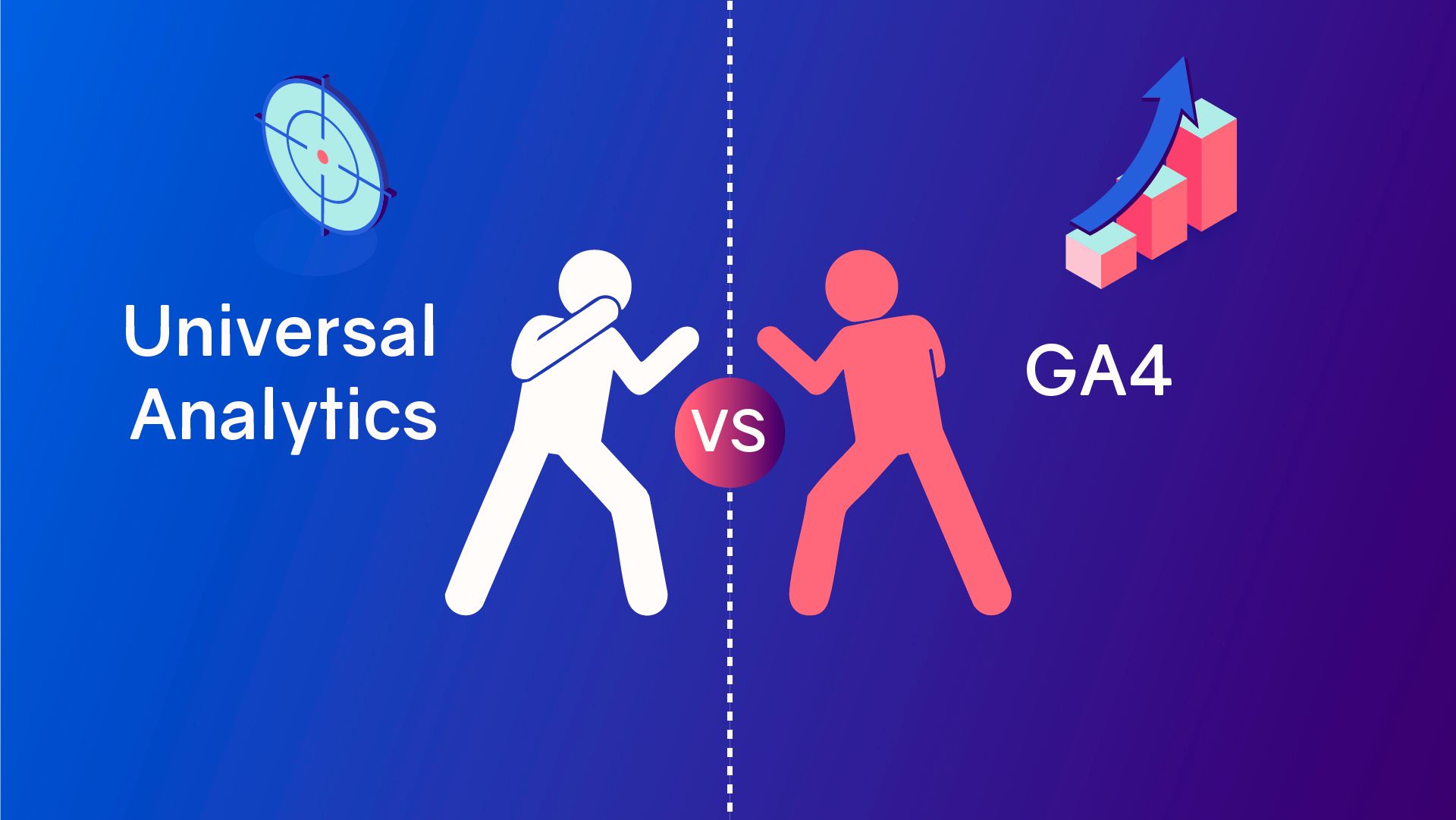Navigating from Universal Analytics to GA4 - the good and the bad

The sunsetting of Google Universal Analytics (UA) and accompanying switch to GA4 in 2023 opened the door for advertisers and app and website owners to gain many new and valuable insights into their users. Compared to UA, GA4 offers companies new ways to measure and model data.
While UA reported on the total number of users visiting a website or an app, and which pages they looked at during each ‘session’, GA4 introduces the concept of active users, based on engagement.
GA4’s engagement metrics are based on ‘events’ - interactions with a website or app - which are broken down into four event types:
Automatically collected events are triggered by basic interactions with a site or app, such as page views, depth of scrolling and outbound link clicks.
Enhanced measurement events are ones that you can set to be measured by enabling them in the GA4 interface. They include actions such as site searches, file downloads, video engagement and form interactions.
Recommended events can be selected that align with your standard use cases and help improve reporting accuracy
Custom events are interactions with your website or app that are unique to your business.
While some of the GA events were measurable in UA, using Google Tag Manager in conjunction with the analytics programme, GA4 brings the process together on one platform.
GA4 leans in to user engagement
One of GA4’s new engagement metrics that wasn’t available in UA is ‘user engagement’. This is the amount of time someone spends with a web page in focus or an app screen in the foreground. When a user begins a new session, Google Analytics starts to record the amount of time in the session.
The measurement of that part of the session - the event - ends when the user moves the app screen to the background, navigates away from the website, or automatically after 30 minutes of inactivity. Measurement of each event also ends if the site or app crashes. In each case, a new measurement of the next event in the session is then initiated.
GA4 defines active users as those who complete an ‘engaged session’. This is a session that either lasts for 10 seconds or longer; has at least two page or screen views; or has at least one conversion event, i.e., a user action that the business defines as important, such as making a purchase, signing up for a newsletter or downloading a document.
This idea of engagement and active users was one that was simply not present in UA. But while it presents opportunities for companies, it also presents new challenges.
Moving away from last-click
In GA4’s view of the world, users who visit a website or an app but do not interact with it for long enough, or fail to complete any of the required actions to meet the criteria for an engaged session, are not considered active users. So even if we run a campaign on an advertiser’s behalf to drive traffic to their website or app, a proportion of the traffic the campaign drove will simply not register in GA4. In our experience, to date, these ‘lost users’ represent around 30% of the total traffic driven by the campaign.
So even if our campaign has brought users to the advertiser’s website, when they don’t make the purchase on that visit, the credit for bringing them to the site may not be attributed to the campaign - even if they bookmark the product page and return and make the purchase a day or two later.
We have moved from a last-click approach in UA to more of a data-driven approach in GA4. But for GA4 to work fairly, we have to look at all the touchpoints, which has become somewhat complicated, because the attribution mostly goes to the direct traffic, or the direct SEO traffic.
Our approach has been to encourage our clients to let us access their GA so that we can attribute everything fairly and minimise the discrepancy between the traffic we know we are driving and what GA4 is telling the advertiser. In that way, advertisers can benefit from GA4’s enhancements, while still attributing campaign performance fairly and accurately.
By implementing GA4 correctly, advertisers can look forward to unlocking unparalleled insights into user behaviour in 2025, enabling smarter attribution and campaign optimisation. For us, this shift presents an exciting opportunity to help them leverage event-based engagement metrics for more data-driven strategies that deepen customer connections, navigate the complexities of digital advertising with precision, and enhance ROI for our advertisers.
Also published in:
Martech Outlook



